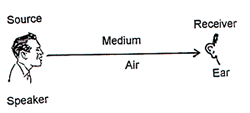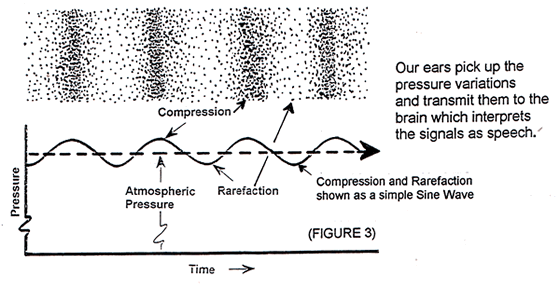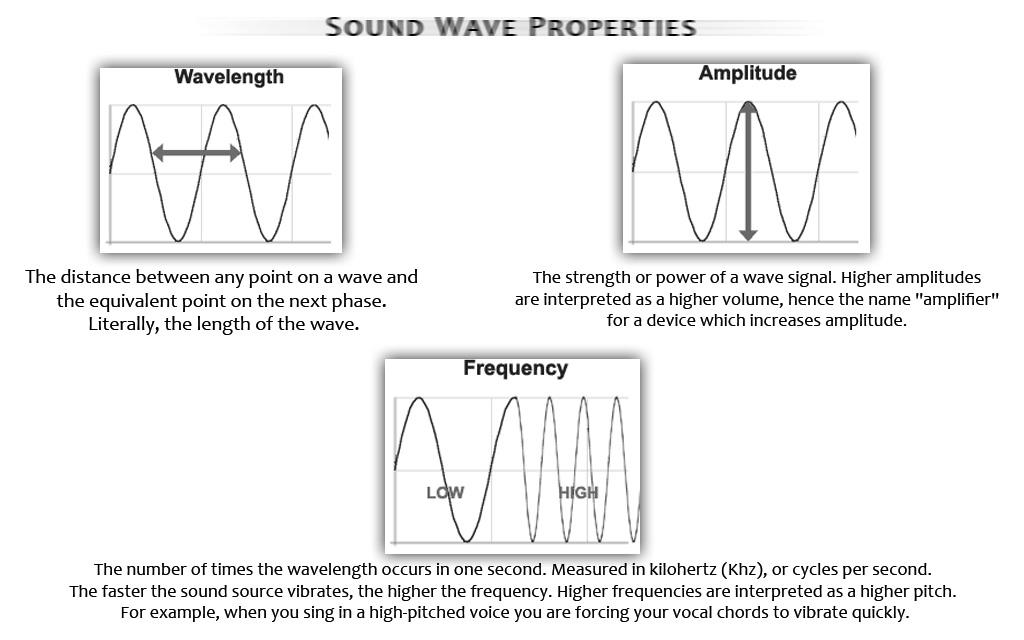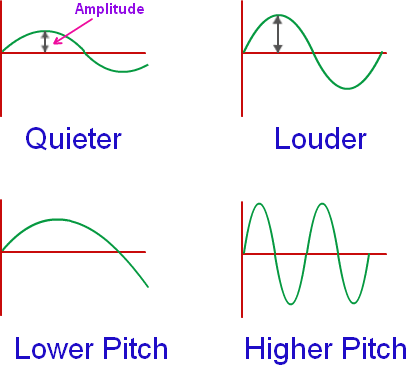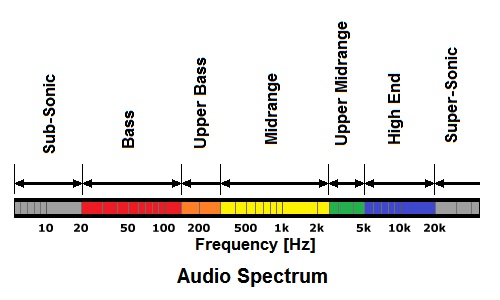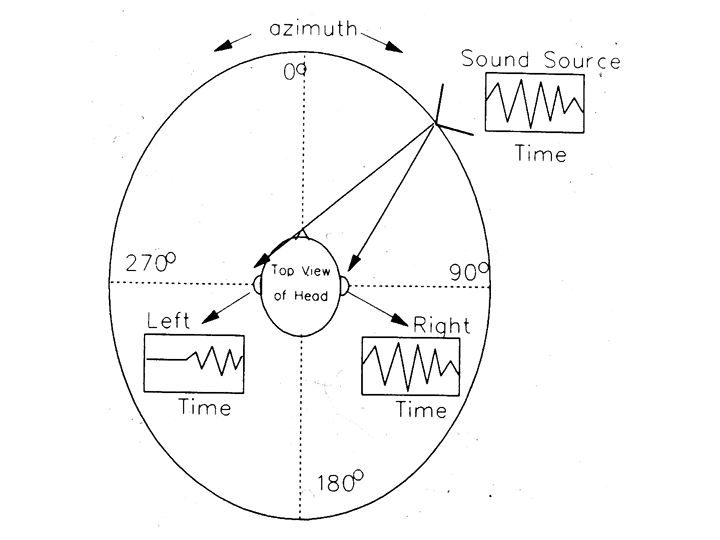Sound and listening
What is sound
We experience sound thought displacement of air molecules from a source to a the receiver.
When a source emits a sound, it makes the air molecules compress and decompress, traveling away from the source.
The rate of this compression-decompression variation is what is called the frequency of a sound. And the amount of air molecules displace give us the amplitude or volume of a sound.
Sound wave properties
- frequency = pitch
- measured in Hertz (Hz) or cycle per second. 1Hz = 1cycle/sec
- amplitude = volume
- measured in decibel (db)
Sound waves on liquid
audible sound
Human audible sound, or the hearing spectrum, is located between 20Hz and 20 000Hz of of the acoustic spectrum
How do we listen?
How does the movement of air molecules gets perceived as sound?
Spacial Perception Sound
How do we detect the position where sound is coming from?
- arrival time difference
- amplitude difference
- filtering, by the outer ear
Janet Cardiff - binaural mics
Hearing as composing
Recording and listening exercise.
- record 1 to 2 minutes of sound
- write down all you here during those minutes, either with or without headphones
4'33
4'33 (1952) is a probably the most famous John Cage composition, where the performance stands in front of the audience without playing a single note, for 4 minutes and 33 seconds.
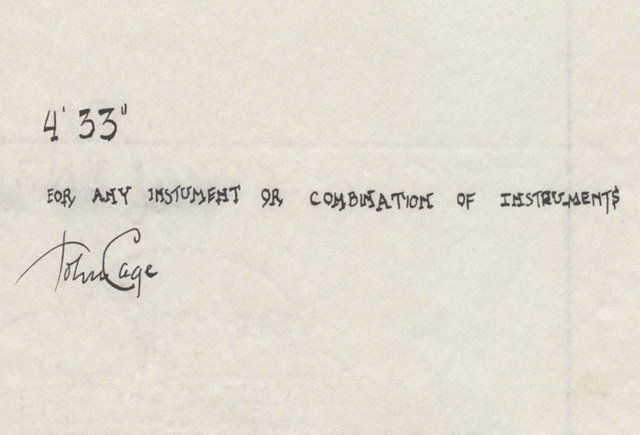 http://hyperallergic.com/85779/the-original-john-cage-433-in-proportional-notation-19521953/
http://hyperallergic.com/85779/the-original-john-cage-433-in-proportional-notation-19521953/
- hearing as composing
- all sound can become music
Expanded listening
contact mics
- listen to how solid objects respond to vibration
- due to its physical properties each object will respond - resonate - differently to vibration
- The resonant frequencies are the frequencies that are emphasized by the object
David Tudor - Rainforest Template:Youtube:iT9HP48sHTg
- electromagnetic pickups
Digital audio
Editing
Bibliography
- Collins, Nicolas. 2006. Handmade Electronic Music. London: Routledge.
- “Sound:An Interactive eBook on the Physics of Sound.” 2017. Sound: An Interactive eBook on the Physics of Sound. Accessed January 11. https://soundphysics.ius.edu/.

